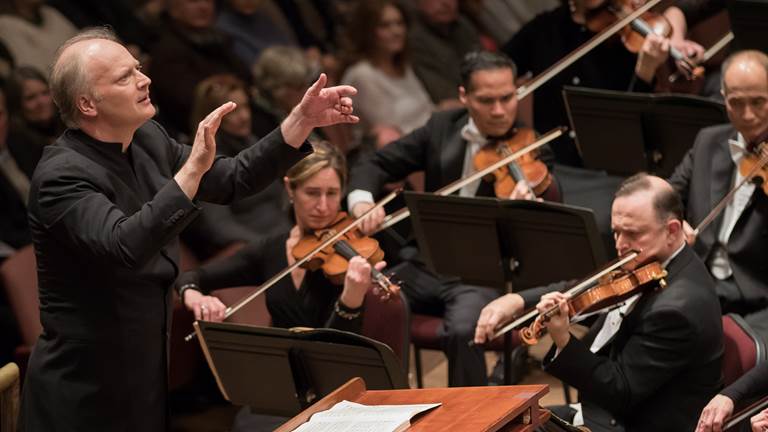May The Force Be With You
In a galaxy far, far away, a writer named George Lucas created a story about an epic space battle between a bunch of heroes and villains. This was back in 1977, when Lucas cooked up a colorful cast of characters including a dark warrior, a princess, a funny rebel, and a humble farm boy who goes on to galactic greatness.
Even after seven films, the story still continues the themes of hope and inspiration, courage to fight off the bad guys, and working together for the good of all humankind. Lucas’s lightsabers light the way with music that has become almost as famous as the films.
 American composer John Williams was asked to compose the music for Lucas’s first film, and many of the series since. Williams came up with the idea to link each of the story’s main characters with a particular theme, or motif. These themes are instantly recognizable by audiences and offer up clues on how to think or feel about a character. And by choosing “heroic-sounding” instruments like trumpets to rally the troops and string instruments to tug at our hearts, Williams tells us when to cheer, when to fear, and when to watch closely and listen well. Listening to the music, you’ll be inspired to soar into battle for what is right and just. And may the force be with you…always!
American composer John Williams was asked to compose the music for Lucas’s first film, and many of the series since. Williams came up with the idea to link each of the story’s main characters with a particular theme, or motif. These themes are instantly recognizable by audiences and offer up clues on how to think or feel about a character. And by choosing “heroic-sounding” instruments like trumpets to rally the troops and string instruments to tug at our hearts, Williams tells us when to cheer, when to fear, and when to watch closely and listen well. Listening to the music, you’ll be inspired to soar into battle for what is right and just. And may the force be with you…always!
 Travel back to 1913 when English composer Gustav Holst (pronounced HOLE-st) looked up in the sky and was inspired to write seven “mood pieces” collectively called The Planets. Each piece represented a different planet known at that time.
Travel back to 1913 when English composer Gustav Holst (pronounced HOLE-st) looked up in the sky and was inspired to write seven “mood pieces” collectively called The Planets. Each piece represented a different planet known at that time.
 British composer John Ireland was an extremely careful composer who put a lot of thought into his work. During the dark days of World War II, he was asked by the British Broadcasting Corporation to write a march that might help strengthen the courage of the British people.
British composer John Ireland was an extremely careful composer who put a lot of thought into his work. During the dark days of World War II, he was asked by the British Broadcasting Corporation to write a march that might help strengthen the courage of the British people.
 American composer John Williams was asked to compose the music for Lucas’s first film, and many of the series since. Williams came up with the idea to link each of the story’s main characters with a particular theme, or motif. These themes are instantly recognizable by audiences and offer up clues on how to think or feel about a character. And by choosing “heroic-sounding” instruments like trumpets to rally the troops and string instruments to tug at our hearts, Williams tells us when to cheer, when to fear, and when to watch closely and listen well. Listening to the music, you’ll be inspired to soar into battle for what is right and just. And may the force be with you…always!
American composer John Williams was asked to compose the music for Lucas’s first film, and many of the series since. Williams came up with the idea to link each of the story’s main characters with a particular theme, or motif. These themes are instantly recognizable by audiences and offer up clues on how to think or feel about a character. And by choosing “heroic-sounding” instruments like trumpets to rally the troops and string instruments to tug at our hearts, Williams tells us when to cheer, when to fear, and when to watch closely and listen well. Listening to the music, you’ll be inspired to soar into battle for what is right and just. And may the force be with you…always!








